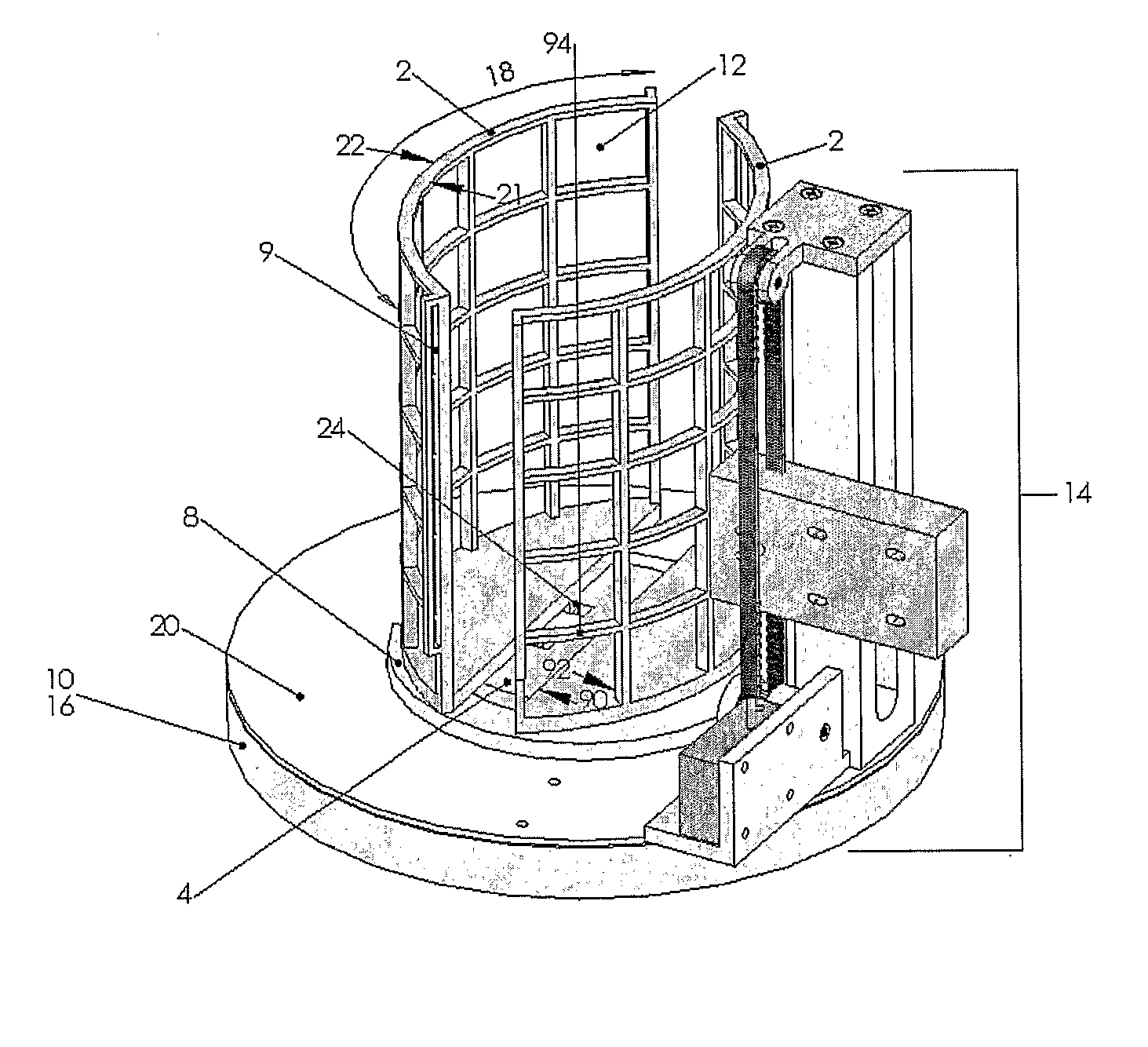Interventional Immobilization Device
- Summary
- Abstract
- Description
- Claims
- Application Information
AI Technical Summary
Benefits of technology
Problems solved by technology
Method used
Image
Examples
Embodiment Construction
[0034]FIG. 1 depicts an embodiment of an interventional immobilization device, which demonstrates two curved compression grid plates (2) and a probe positioner (14) (e.g., a biopsy positioner) attached to a rotary track conveyor (20). The rotary track conveyor (20) fits between an inner portion (8) and outer portion (10) of the base (16). A breast may be received between the curved compression grid plates (2). One of skill in the art will understand that although the embodiment of FIG. 1 shows two curved compression grid plates (2), the number of curved compression grid plates is not so limited. As long as the curved compression grid plates immobilize a breast to a level that satisfies the requirements of the medical procedure, any number of curved compression grid plates, including three, four, or more may be used. In the embodiment of FIG. 1, the curved compression grid plates (2) are connected to a platform (4). Although FIG. 1 demonstrates a removable connection (24) to the plat...
PUM
 Login to View More
Login to View More Abstract
Description
Claims
Application Information
 Login to View More
Login to View More - R&D
- Intellectual Property
- Life Sciences
- Materials
- Tech Scout
- Unparalleled Data Quality
- Higher Quality Content
- 60% Fewer Hallucinations
Browse by: Latest US Patents, China's latest patents, Technical Efficacy Thesaurus, Application Domain, Technology Topic, Popular Technical Reports.
© 2025 PatSnap. All rights reserved.Legal|Privacy policy|Modern Slavery Act Transparency Statement|Sitemap|About US| Contact US: help@patsnap.com



